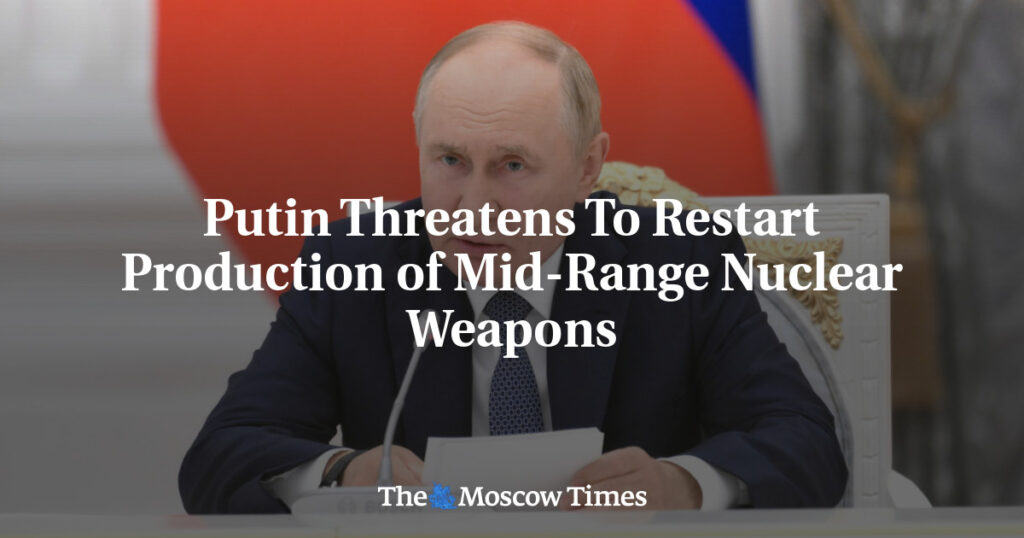Rising Tensions: Putin Threatens Nuclear Arms Production Amid U.S. Missile Deployments in Europe
In a significant escalation of military rhetoric, Russian President Vladimir Putin threatened to resume production of intermediate-range nuclear weapons. This warning, issued at a naval parade in St. Petersburg, was predicated on the United States’ recent plans to deploy missiles to Germany and other parts of Europe.
“If the United States carries out such plans, we will consider ourselves liberated from the unilateral moratorium previously adopted on the deployment of medium- and short-range strike capabilities,” stated Putin. He further revealed that Russia is in the final stages of developing several such weapons systems.
A Historical Context
Intermediate-range missiles, with ranges between 500 and 5,500 kilometers (300-3,400 miles), were initially curtailed by the 1987 Intermediate-Range Nuclear Forces Treaty, a landmark arms control agreement between the U.S. and the Soviet Union. However, both nations withdrew from this treaty in 2019, accusing one another of non-compliance. Since then, Russia had refrained from restarting missile production, contingent on the U.S. not deploying missiles abroad.
Renewed Deployments
The recent surge in tensions has been fueled by Washington and Berlin’s announcement in early July of “episodic deployments” of long-range U.S. missiles, including Tomahawk cruise missiles, to Germany. This deployment is set to commence in 2026. The U.S. has also deployed Typhon mid-range missile systems in Denmark and the Philippines during recent military exercises.
Putin expressed significant concern over these developments, asserting that "important Russian administrative and military sites" could be within reach of these missiles, which might be equipped with nuclear warheads. Such capabilities would put Russian territories at risk of being struck within approximately ten minutes of a missile launch.
Echoes of the Cold War
The escalating situation bears a stark resemblance to the Cold War era, particularly the deployment of U.S. Pershing ballistic missiles in West Germany during the 1980s. These missiles remained stationed even through the reunification of Germany and into the 1990s. Post-Cold War, the U.S. dramatically reduced its overseas missile deployments as the immediate threat from Moscow diminished.
Kremlin officials have repeatedly warned that the proposed U.S. deployments would make European capitals potential targets for Russian missiles. "We are taking steady steps towards the Cold War. All the attributes of the Cold War with the direct confrontation are returning," remarked Kremlin spokesperson Dmitry Peskov in mid-July.
As both countries prepare to ramp up their missile capabilities, the world watches closely, fearing a rekindling of Cold War hostilities. The international community now faces the urgent task of navigating these treacherous waters, aiming to avert a full-blown arms race and ensuring global stability.
For more information on the Russian Navy and its activities, visit the Ministry of Defence of the Russian Federation.
